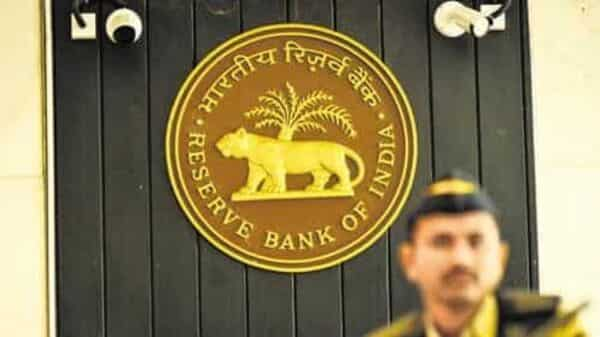India's forex reserves dropped by $8.319 billion in the latest we
India’s forex reserves dropped by $8.319 billion in the latest week that ended February 10, making it the largest weekly drop in over 11 months. All components in forex reserves witnessed a decline in the said week. Forex reserves are assets held by a nation’s central bank in foreign currencies.
India’s forex reserves dropped by $8.319 billion in the latest week that ended February 10, making it the largest weekly drop in over 11 months. All components in forex reserves witnessed a decline in the said week. Forex reserves are assets held by a nation’s central bank in foreign currencies.
As per RBI’s data, in the week ending February, forex reserves stood at $566.948 billion, declining by $8.319 billion. This would be a far bigger decline compared to the previous week’s drop of $1.494 billion.
As per RBI’s data, in the week ending February, forex reserves stood at $566.948 billion, declining by $8.319 billion. This would be a far bigger decline compared to the previous week’s drop of $1.494 billion.
In the previous week which ended on February 03, 2023, reserves were at $575.267 billion.
In the previous week which ended on February 03, 2023, reserves were at $575.267 billion.
On week-on-week performance, reserves have plunged by at least 1.5%.
On week-on-week performance, reserves have plunged by at least 1.5%.
Further, RBI’s data showed that foreign currency assets (FCA) which is the largest component of forex reserves, dropped by $7.108 billion in the week ending February 10 to $500.587 billion. In the previous week, the decline was around $1.323 billion.
Further, RBI’s data showed that foreign currency assets (FCA) which is the largest component of forex reserves, dropped by $7.108 billion in the week ending February 10 to $500.587 billion. In the previous week, the decline was around $1.323 billion.
Also, gold reserves recorded a decline of $919 million to $42.862 billion in the week under review. While SDRs tumbled by $190 million to $18.354 billion. Also, the reserve position in the IMF slipped by $102 million to $5.145 billion in the latest week.
Also, gold reserves recorded a decline of $919 million to $42.862 billion in the week under review. While SDRs tumbled by $190 million to $18.354 billion. Also, the reserve position in the IMF slipped by $102 million to $5.145 billion in the latest week.
Reserves were at an all-time high of $645 billion in October 2021.
Reserves were at an all-time high of $645 billion in October 2021.
However, the reserve kitty has been declining as RBI intervenes in the spot and forwards market to curb exchange rate volatility.
However, the reserve kitty has been declining as RBI intervenes in the spot and forwards market to curb exchange rate volatility.
In its February 2023 bulletin, RBI said, “foreign exchange reserves have rebounded from $ 524.5 billion on October 21, 2022 to $ 576.8 billion as on January 27, 2023 covering around 9.4 months of projected imports for 2022-23. India’s external debt ratios are low by international standards.”
In its February 2023 bulletin, RBI said, “foreign exchange reserves have rebounded from $ 524.5 billion on October 21, 2022 to $ 576.8 billion as on January 27, 2023 covering around 9.4 months of projected imports for 2022-23. India’s external debt ratios are low by international standards.”
RBI believes that the size of forex reserves is comfortable. It added, “This has enabled the Reserve Bank to eschew measures to control capital flows and take steps to further internationalise the domestic currency, even during episodes of significant capital outflows.”
RBI believes that the size of forex reserves is comfortable. It added, “This has enabled the Reserve Bank to eschew measures to control capital flows and take steps to further internationalise the domestic currency, even during episodes of significant capital outflows.”
Explaining in detail about capital flow shocks and their intervention, RBI’s bulletin said, the impact of capital flow shock (one percentage point of GDP) is conditional on the RBI’s decision to intervene and sterilise. In case of a capital outflow shock, assuming the RBI intervenes and sterilises 70 per cent, the reserves will deplete by 0.7 percentage point of nominal GDP. In this scenario, the exchange rate could depreciate by close to 1 per cent, inducing inflation of around 10 bps.
Explaining in detail about capital flow shocks and their intervention, RBI’s bulletin said, the impact of capital flow shock (one percentage point of GDP) is conditional on the RBI’s decision to intervene and sterilise. In case of a capital outflow shock, assuming the RBI intervenes and sterilises 70 per cent, the reserves will deplete by 0.7 percentage point of nominal GDP. In this scenario, the exchange rate could depreciate by close to 1 per cent, inducing inflation of around 10 bps.
www.livemint.com
